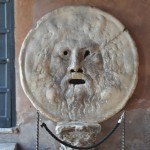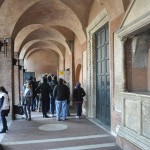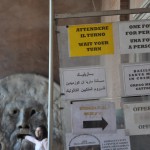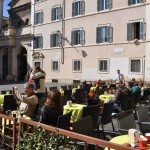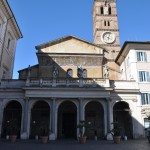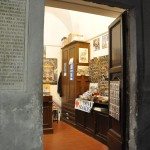Circus Maximus Rome
The Circus Maximus, (Circo Massimo) is an ancient chariot-racing stadium situated between the Aventine and Palatine Hills in Rome.
It was built back in 326 BC; it was the first and largest stadium in ancient Rome.
Today there are almost no remains of the Circus Maximum to see. A lot of the structure was used as building material for medieval and Renaissance constructions. The site is now a public park, it’s an open space covered with grass that still has the shape of the arena. To fully appreciate this huge field, let your imagination take over and visualize what it must have been like.
The original Circus Maximus was built out of wood. It burnt down several of times. The first fire was in 31 BC. Emperor Augustus had it rebuild, he also put on an imperial box on the Palatine Hill. A large obelisk from Heliopolis was added to the spina. The same obelisk can now be found at the center of the Piazza del Popolo. Another obelisk was added in the 4th century. A second fire, in AD 64, which started at the lower level where the wooden shops were located, burned much of Rome during the reign of Emperor Nero. Trajan rebuilt it in AD 103 this time instead of using wood, the lower part was built in marble and the rest was made out of stone. They put starting gates in 329 BC. In 174 BC the gates were rebuilt and seven wooden eggs were put on top of the spina, the central wall in the arena. It was used to count the number of laps; after a lap one egg was removed. In 33 BC seven bronze dolphins were added to the spina for the same purpose.
Circus Maximus Rome was made for sporting competitions of all kinds. They would hold gladiator combats, however it became most popular for chariot races that began early morning until dusk. They would have up to a hundred races a day. Admission was free to everyone. It could hold 250,000 to 300,000 spectators with standing room.
Most days only chariot races with quadrigaes, pulled by four horses, were being held. They were very popular with the crowds fanatically supporting one of the four factions: red, white, green and blue. Many people made bets and often clashed, sometimes resulting in deaths among the spectators.
The last race at the Circus Maximus was held in AD 549, close to a millennium after the first races were held at this site.
Circus Maximus is a five-minute walk from the Mouth of Truth.
Address: Via del Circo Massimo, 00186 Roma, Italy
Phone number: +39 06 0608
From Circus Maximus you can go and visit the Mouth of Truth attraction which is only a couple of 100 meters away. The Baths of Caracalla are also in that corner, even though they are a little further away (around 2 km).
-

- Baths of Caracalla, also known as Thermae Antoninianae, began construction in 212 AD, under the reign of Emperor Caracalla, officially known as Marcus Aurelius Antoninus
-
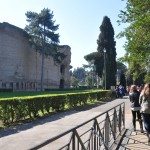
- Keeping in mind the importance of the health of the citizens, the Baths of Caracalla Rome were constructed and completed in 217 AD
Once you have reached the Mouth of Truth attraction you can cross the Garibaldi bridge and you'll get to the Trastevere area. The structure you see on the Island is a hospital called Fatebenefratelli. During your visit in the Trastevere area, you can see one of Romes oldest churches called Santa Maria in Trastevere.






